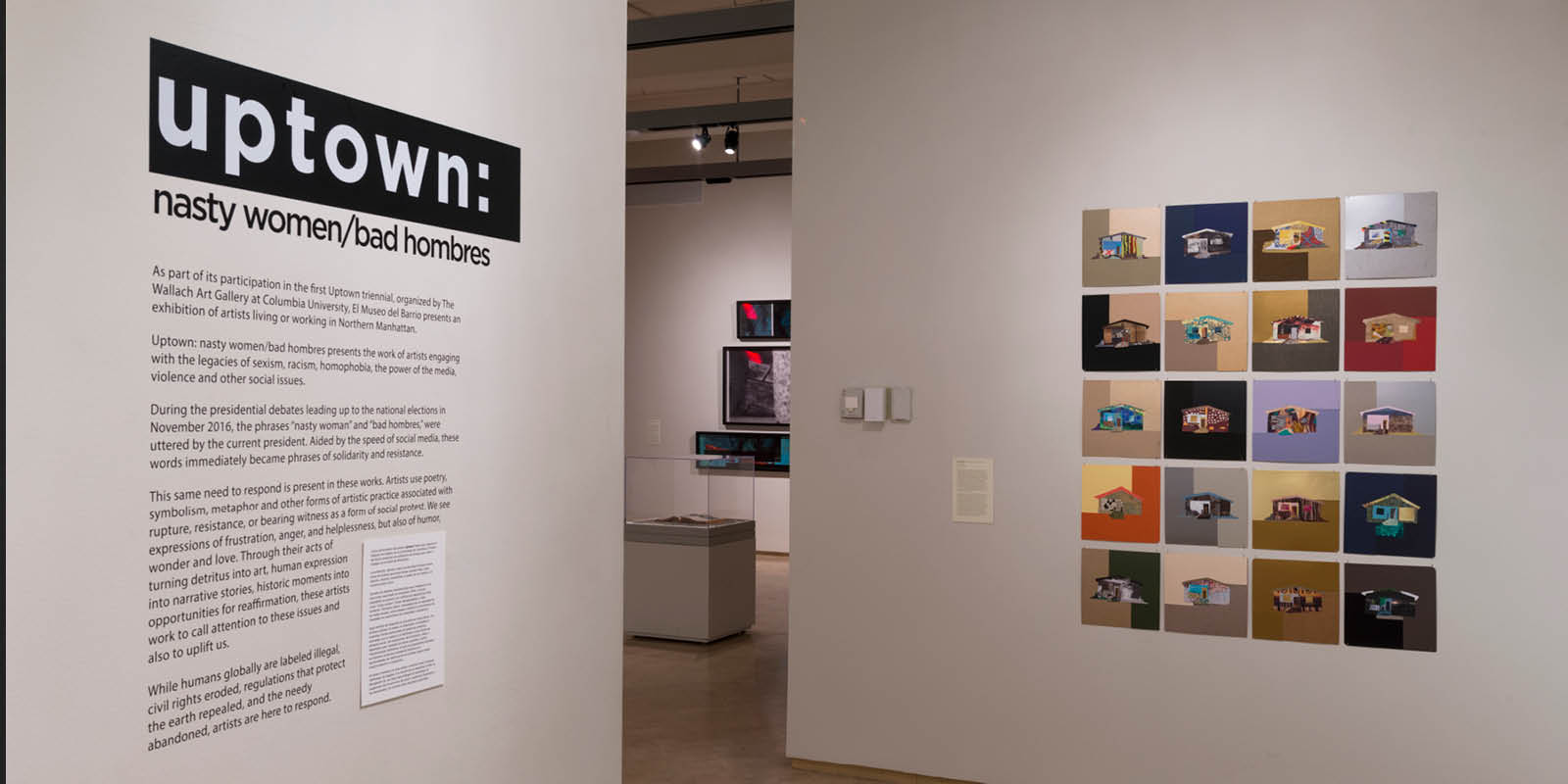As part of its participation in The Wallach Art Gallery at Columbia University’s first Uptown triennial, El Museo del Barrio presents an exhibition of artists living or working in El Barrio, Harlem, Washington Heights and Inwood. El Museo’s uptown: nasty women/bad hombres presents the work of artists engaging with the legacies of sexism, racism, homophobia, the power of the media, the state of health care and our natural environment, and violence in various ways. The artists explore these issues through poetry, symbolism, and metaphor or by exploring particular forms of artistic practice associated with rupture or bearing witness as a form of social protest. Some employ gendered or radical forms of art making for their purposes. Collage, documentary photography, poetic text, painting, needlepoint, textile work and video are all methods enlisted by these artists to create works that deal with various social issues.
Artists included in the exhibition are: Elan Cadiz, Vladimir Cybil Charlier, Pepe Coronado, COCO144/Roberto Gualtieri, Jaime Davidovich, Carlos De Jesus, Rene De Los Santos, Francisco Donoso FEEGZ/Carlos Jesús Martínez Domínguez, Sandra Fernández, Marquita Flowers, Reynaldo García Pantaleón, Alex Guerrero, Leslie Jiménez, Lauren Kelley, Rejin Leys, Stephanie Lindquist, Miguel Luciano, Luanda Lozano, Ivan Monforte, José Morales, Darío Oleaga, Jaime Permuth, Kenny Rivero, Moses Ros-Suarez, José Rodríguez, Aya Rodríguez-Izumi, Ruben Natal-San Miguel, Sable Elyse Smith, Rider Ureña, Regina Viqueira, and Nari Ward.
SELECTED ARTIST QUOTE
Ivan Monforte | My art uses simple gestures and materials, as well as emotional language and content as strategic tools to address themes of loss and mourning, representations of class, gender, race and sexuality and the pursuit of love. These gestures typically involve highly emotional and participatory interactions between an individual, an audience, and me. They often result in social sculptures, performance-based videos, and text-based objects. The economy of the work is rooted in my artistic investment in dialogue and inclusion. I am interested in the complex intellectual and emotional dialogue that can occur between a viewer and the artwork – in particular, the conversation that takes place afterwards, when the viewer is left to process the interaction. Ideally, inspiring people to re-examine and respect/accept universal truths grounded in emotions.
Stephanie A. Lindquist | I’m fascinated by process-oriented art that privileges the formation of art as a rite or ritual. With time, the objects and images near me become props and stages for the plays I create. For me, sculpture is a vehicle to translate the concept of time, physically activated by me. My old towels, my favorite lapas, they are my personal relics, symbols of me, women, culture.
Kenny Rivero | As I work through a variety of media, primarily painting, drawing, and sculpture, I often begin by contemplating the convoluted histories of New York City and the Dominican Republic. Along with the occasional reference to popular narratives and accepted notions of history, the content of my work pulls from anecdotes from my own family and the collective memory developed by the people living in these two places. Ultimately, my aim is to deconstruct the histories and identities I have been conditioned to understand as absolute, in order to reengineer these parts into new wholes, with new functions. This process allows me to creatively explore, and come to terms with, the broken narrative of Dominican American identity, socio-geographic solidarity, familial expectations, race, and gender roles. As a result, I tend to consider the products of my practice syncretic in nature
